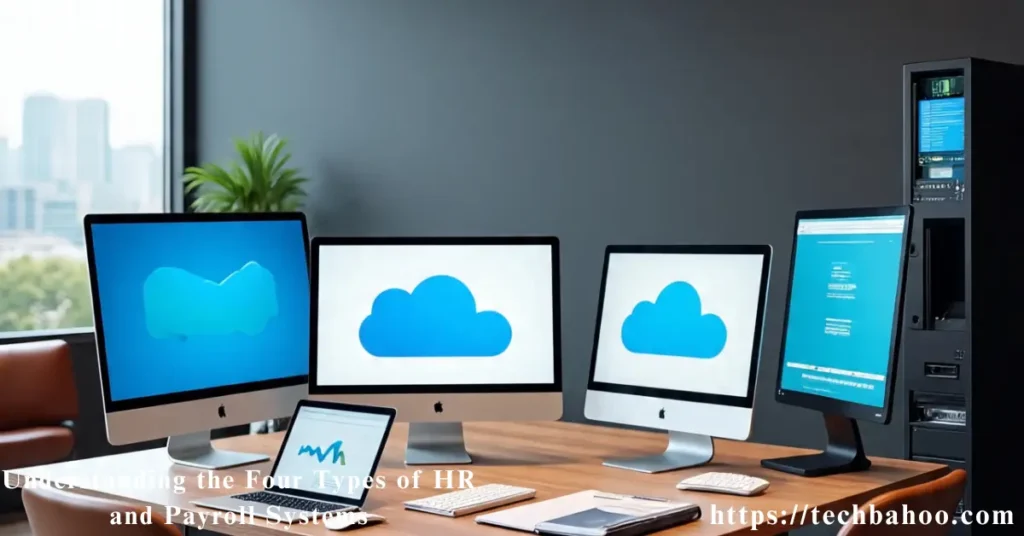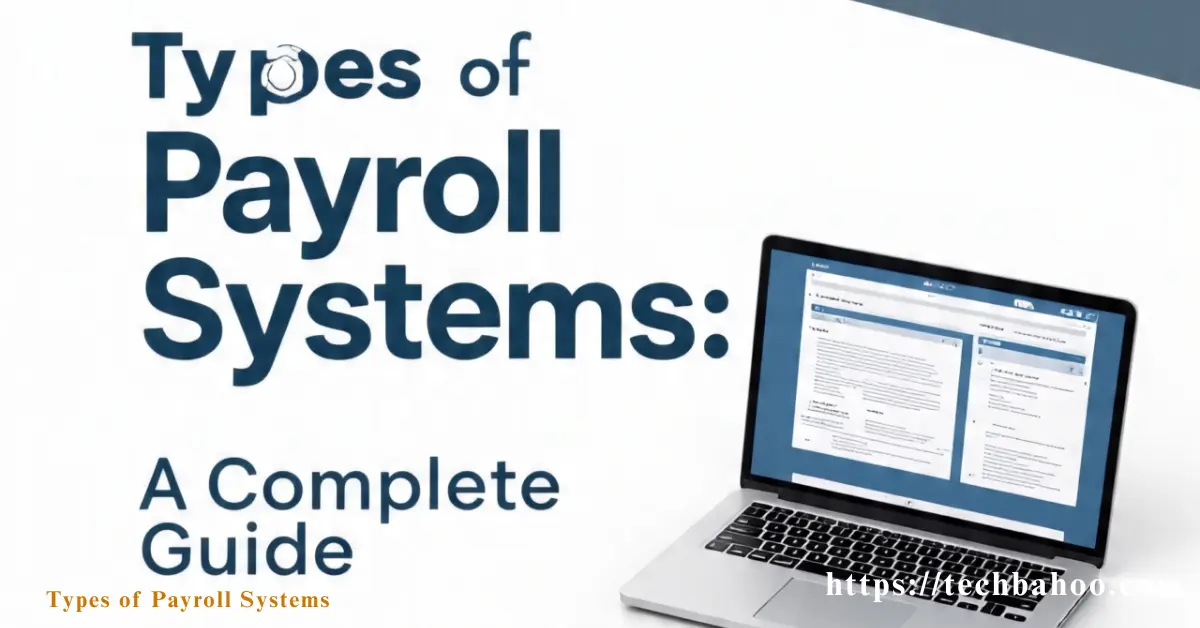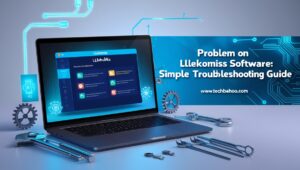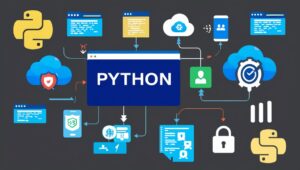Running payroll in the United States isn’t just about handing out checks. It’s about keeping track of wages, hours worked, benefits premiums, and taxes while ensuring payroll accuracy.
Businesses, whether small or large, can’t afford payroll errors because they affect employees, compliance, and ultimately the company’s bottom line.
That’s where different types of payroll systems come in. By understanding each option, organizations can pick the right payroll solutions that meet their needs, reduce clerical tasks, and improve efficiency.
What Is Payroll Software?
At its core, payroll software is a digital tool that helps employers manage employee payments without relying on manual entry and paper-based documentation.
Instead of calculating compensation by hand, these platforms record hours worked, apply tax tables, handle deductions, and prepare W-2 forms automatically.
Unlike payroll manually done by HR staff, payroll management software integrates with HR systems, time tracking tools, and even expense management capability programs.
For example, a small business may use simple payroll software to process paychecks with direct deposit, while a larger company may choose a full-service option that also manages reimbursable employee expenses like travel, lodging, or expense reports.
The objective remains the same: create an accurate and timely payroll process that fits the organization’s goals.
The Benefits of a Payroll System

The biggest benefit of adopting a modern payroll system is speed. With automation, companies save hours by eliminating repetitive clerical tasks like calculating prorated pay, adjusting retro pay, or managing terminated employee records.
Beyond efficiency, another major advantage is compliance. U.S. businesses must follow strict IRS rules, DOL standards, and state-level records retention laws.
A good system reduces the risk of costly audits by keeping records, journal entries, and financial records organized.
Another benefit is employee satisfaction. Modern platforms let employees log in through a mobile app, access pay stubs, check vacation balances, update their profile, such as home address or bank account number, and even download their W-2 forms without needing HR’s help.
This employee self-service capability improves culture, accountability, and makes rewarding employees with bonus payments, merit increases, or cost-of-living increases smoother.
How to Streamline and Automate Payroll
In today’s remote-friendly work landscape, businesses hire not just local talent but also at a global scale. Handling payroll manually for such a workforce is both risky and time-consuming.
By using automated payroll management software, organizations can automate the flow of data between HR crew, accounting platforms, and payroll integrations like third-party apps or programs.
This creates a seamless transfer of earnings, deductions, taxes, and garnishments into the general ledger.
A strong case study is when companies introduce on-demand payment features. Instead of waiting until the traditional pay period, employees can access earned wages early to cover unexpected expenses or bills.
This not only improves the employee experience but also helps businesses attract and retain workers in a competitive marketplace.
Automation is more than just convenience—it is an objective business strategy to reduce payroll mistakes, improve timeliness, and lower payroll expenses.
How to Choose a Payroll Provider
Picking the right payroll provider isn’t about the cheapest price. It’s about finding a system that aligns with your organization’s goals, existing tech stacks, and compliance requirements.
A good business case often involves comparing solutions by reviewing features, functions, and reporting solutions.
Businesses should also look for approval processes, customizable reports, and strong compliance dashboards.
When comparing, ask: Does the provider handle wage garnishment orders? Can it automate tax filing and generate accurate W-2s at year-end? Does it integrate into existing HR and financial platforms?
Will it reduce processing time for independent contractors as well as full-time employees? By focusing on these questions, companies can choose the best payroll platform for scaling and business growth.
Why Choose Paylocity’s Payroll Software?

Among many providers, Paylocity has built a strong reputation in the U.S. market. It offers full-service payroll software that not only simplifies the payroll process but also enhances data insight capabilities.
With its mobile app, employees can review paychecks, access expense reports, and even manage vacation balances anytime.
Paylocity’s payroll platform also integrates with other programs in your tech stack, automating payment processes and reducing clerical tasks.
A case study shows that businesses using Paylocity reduced processing time by up to 40 percent, while also lowering payroll mistakes and gaining access to customizable reports for better business decisions.
For U.S. organizations, Paylocity is more than just a payroll solution; it’s a tool that strengthens compliance, supports scaling, and improves user experience across the HR crew.
What Payroll System Features Should I Have?
Not every company needs the same features, but there are essentials that every U.S. business should demand.
These include direct deposit, automated tax filing, compliance with tax rates, access to tax tables, and customizable reports that give leaders real-time insights.
Advanced features include artificial intelligence that predicts payroll expenses, customizes datasets, and payroll reports that highlight trends in compensation management tools like bonus payments or merit increases.
| Payroll Features | Why It Matters |
| Direct Deposit / ACH | Faster, safer employee payments than checks |
| Expense Management Capability | Tracks travel, lodging, and reimbursable employee expenses |
| Employee Self-Service | Lets staff update profile, view pay stubs, and manage W-2 forms |
| Customizable Reports | Generate datasets, metrics, and out-of-the-box reports for decisions |
| Automation | Cuts clerical tasks, reduces irregular errors and improves accuracy |
Understanding the Four Types of HR and Payroll Systems

Different organizations need different tools depending on size, industry, and workforce needs. Broadly, the U.S. marketplace recognizes four main types of payroll systems. Smaller businesses may need small business payroll software,
While large organizations need more advanced payroll management software with integrated compliance dashboards and customizable reporting solutions. Understanding these categories is key before comparing solutions.
Also Visit: Apple Vision Pro’s Sales Flop, But They’re Rushing Out a New One With M5 Chip Before 2025 Ends
1.) Professional Employer Organizations (PEOs)
PEOs are full-service partners that manage payroll, benefits, and compliance under a co-employment model.
They’re ideal for small and medium businesses that lack a full HR crew but still need access to competitive benefits premiums. In the U.S.,
PEOs help with tax filing process, wage garnishment orders, and staying compliant with records retention laws. For startups looking to focus on growth while outsourcing clerical tasks, a PEO can be the right fit.
2.) Standalone Payroll Platforms
A standalone payroll platform is often chosen by small organizations that just want to process paychecks, manage pay periods, and handle direct deposit.
These tools usually don’t include advanced HR or compensation management tools, but they deliver reliable payroll accuracy and are cost-effective. They work best for hourly employees and businesses with simple payment processes.
3.) HR-Centric Payroll Platforms (Mid-Market)
For growing mid-sized companies, an HR-centric payroll platform is the bridge between simple tools and enterprise-grade systems.
These solutions combine time tracking, recruitment of candidates and job-seekers, expense reports, and payroll in one.
They help organizations not only process paychecks but also manage approval processes, employee profile data, and business decisions.
With added features like customizable datasets and reporting solutions, they provide a balanced user experience.
4.) HR-Centric Payroll Platforms (Enterprise)
Large-scale companies with thousands of employees, multiple states of operation, and even international employees need an enterprise-level solution.
These full-service payroll systems manage foreign currencies, time zones, and compliance requirements for global payroll solutions.
They also handle garnishment management, account mapping, and seamless transfer of data into financial records. For large organizations, these platforms improve scaling, boost accuracy, and offer advanced data insight capabilities.
FAQs About Types of Payroll Systems
1. What are the main types of payroll systems used in the U.S.?
The four main types of payroll systems are Professional Employer Organizations (PEOs), standalone payroll platforms, HR-centric payroll platforms for mid-market companies, and enterprise-level payroll platforms. Each type serves a different purpose.
2. Why should a business switch from manual payroll to payroll software?
Running payroll manually with documentation and manual entry increases the risk of payroll errors, compliance mistakes, and lost records. Using payroll software improves accuracy, speeds up payment processes, and reduces clerical tasks like tracking wages, taxes, and benefits premiums.
3. How does payroll automation save time and money?
Automation in payroll solutions removes repetitive tasks such as calculating deductions, processing retro pay, and managing garnishment orders. It allows a seamless transfer of data between HR, accounting, and payroll systems.
4. What features should I look for in payroll management software?
Good payroll management software should include direct deposit (ACH), automate tax filing, and comply with tax rates and records retention laws.
5. Can payroll systems handle remote and international employees?
Yes, modern payroll platforms are designed for today’s remote-friendly work landscape. Some even act as global payroll solutions that support international employees, foreign currencies, and different time zones..
Final Words
Payroll is more than issuing checks; it’s about creating a streamlined payroll process that supports compliance, boosts efficiency, and saves money.
By understanding the different types of payroll systems—from PEOs to standalone payroll platforms and enterprise payroll solutions—U.S.
Businesses can choose the system that best aligns with their organization’s goals. Whether it’s saving time with automation, reducing payroll mistakes, or offering employee self-service, the right system turns payroll into a strategic asset that fuels business growth.











